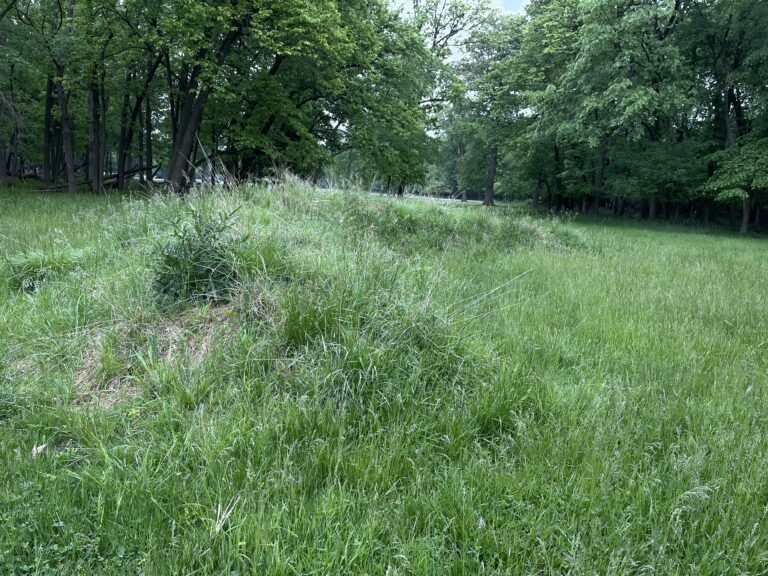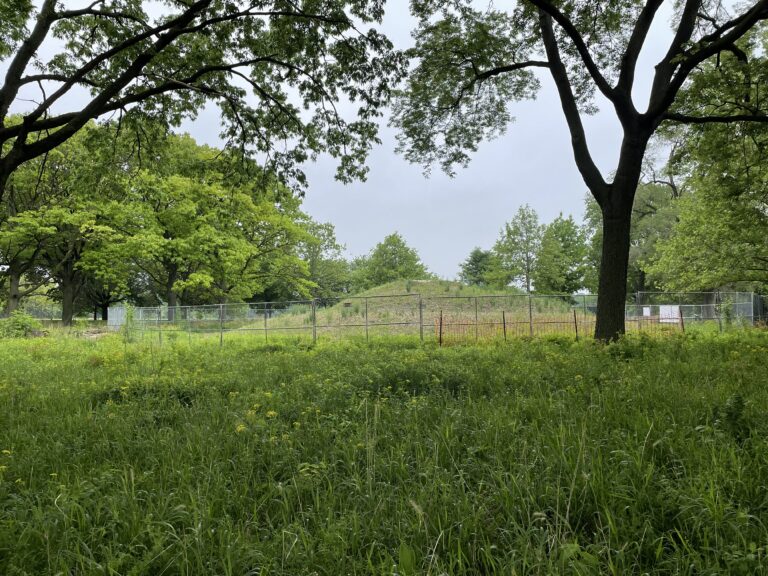The ultimatum through these envisionings, more than anything, is the achievement of a ‘presence,’ a state of being that is encompassing of our ability to exist and thrive now, not simply in the past or in an alternative future.
Santiago X
X, M.Arch, MFA is an Indigenous futurist, multidisciplinary artist and architect specializing in land, architectural, and new media installation. He is an enrolled citizen of the Coushatta Tribe of Louisiana (Koasati) and Indigenous CHamoru from the Island of Guam (Hacha’Maori).
He joined us in spring 2019, in Chicago, to show us the site where “The Coiled Serpent” mound would be built and to talk about earthworks and art. X and Kelly Wisecup returned to our conversations in spring 2022.
KW: YOU’VE BEEN BUILDING EARTHWORKS OVER THE LAST FEW YEARS, “THE COILED SERPENT” NEAR THE CHICAGO RIVER IN HORNER PARK, AND “POKTO CINTO, SERPENT TWIN” FARTHER WEST, NEAR THE DES PLAINES RIVER. EARTHWORKS HAVE BEEN BUILT NEAR RIVERS FOR THOUSANDS OF YEARS, AND THE MISSISSIPPI RIVER HAS MANY EARTHWORKS BUILT IN RELATION TO IT, INCLUDING CAHOKIA AND MANY, MANY OTHERS. HOW DID MOUNDS EMERGE AS A FORM WITH WHICH YOU WANTED TO WORK, AND HOW DO RIVERS FACTOR INTO THAT FORM FOR YOU?
X: As a Native Architect, the presence of Native placemaking through earthworks and other modalities, acts as a proclamation of existence and a declaration of a thriving culture. Ancestrally and pragmatically situated near rivers and the convergence of waterways, the river and water acts as a spine or or arterial network providing life and sustenance, a connection to the continuation of our shared prosperity. My ancestors created some of the largest and oldest mounds on this continent, and it was always a destination for me, to arrive at the threshold in my career where it could be possible to contribute to the reclamation of the practice of mound building, seeking to understand more and grow with each creation.
KW: YOU’VE INSISTED ELSEWHERE THAT BUILDING THE MOUNDS IS NOT AN ACT OF NOSTALGIA, BUT AN ACT OF MAKING AND CREATING ON INDIGENOUS LANDS. WHAT KINDS OF CONVERSATIONS OR RELATIONS AMONG AND WITH INDIGENOUS ARTISTS OR CREATORS AND INDIGENOUS LANDS DO YOU FIND THE MOUNDS MAKING POSSIBLE?
X: Ultimately, what I think is incredible about this moment, is the fact that mound construction is reemerging and being practiced by many tribes and communities today. The new First American Art Museum in Oklahoma, representing 39 living tribal nations, recently constructed and unveiled a large semi-circular mound created to cradle cultural celebrations and that can be walked upon to experience views of the grounds and larger city. There are a number of my contemporaries that beautifully highlight mound building culture in their work, Sky Hopinka and Jeffrey Gibson immediately come to mind. Through conversation, excursions to mound sites, and studio visits, the mutual perpetuity coursing throughout our respective practices finds undulating and natural connections.
KW: YOU DESCRIBE YOURSELF AS AN INDIGENOUS FUTURIST—HOW DO YOU UNDERSTAND INDIGENOUS FUTURISM, AND WHAT MATERIALS HAVE YOU FOUND MOST USEFUL IN THIS PRACTICE?
X: “Indigenous Futurism” had a distinct purpose early in my career to combat the past-tense often superimposed onto my identity and ultimately my work. Today, those classified as futurists from all backgrounds are fighting for prosperity and inclusivity in their respective communities, and in this world. The European art movement of “Futurism” in the 20th century, emerged as a liberation movement from their past, I think this universality still rings true and acts as a vehicle for us non-european peoples to project ourselves into the future we create for ourselves. As of late, I often reflect on post humanity as a discourse for contemplating the necessity for our collective prosperity, utilizing machine learning and artificial intelligence to visualize a world without us. A world that keeps spinning, living, growing, and healing beyond our human existence. I embrace technologies that allow us to immerse ourselves in trajectories of our finite existence, but then offer opportunities to break through those self-constructed corners. The ultimatum through these envisionings, more than anything, is the achievement of a ‘presence’ , a state of being that is encompassing of our ability to exist and thrive now, not simply in the past or in an alternative future.
KW: A LOT OF YOUR WORK IN CHICAGO IS COLLABORATIVE—WITH INDIGENOUS-SERVING ORGANIZATIONS AND WITH OTHER INDIGENOUS ARTISTS. AND THIS COLLABORATION SEEMS TO EXTEND TO THE LAND, AS WELL—I’M THINKING OF THE LAND ACKNOWLEDGEMENT FILMS YOU’VE MADE RECENTLY. HOW DO YOU FIGURE OUT WHAT ROLE COLLABORATION MIGHT PLAY IN A PIECE, AND HOW DO YOU THINK ABOUT COLLABORATION AS PART OF YOUR PRACTICE?
X: The idea behind collaborative efforts for me has always been to empower and embolden communities to tell their stories and have a stake in the world created around them, for them, and by them. The mounds would have never broken ground if it wasn’t for the many community partnerships and collaborators that helped to transform the idea into a reality, over the different stages of the project. When it comes to film work, my explorations in this medium to date, locally, have been mainly to amplify the stories of others, helping to document and translate ancestral connections to land through audiovisual means.
KW: WHAT DOES FOREGROUNDING INDIGENOUS KNOWLEDGE(S) ABOUT THE RIVER OFFER FOR THE FUTURE AS WE ADDRESS THE COMPLEXITIES AND TRAUMAS OF CLIMATE CHANGE? HOW DOES THIS FOREGROUNDING CHALLENGE HOW WE THINK ABOUT PAST HISTORIES?
X: I believe that in our most core understanding of what it means to exist on this world, our connection to water, land and air through our dependence upon these elements for survival, the complexities and nuances of climate change are distilled to “now or never.” This urgency as a foregrounding to how we continue to prosper forward, hopefully will reignite pathways of ancestral principles that are more connected to mutual prosperity, than simply accelerative of a post-human trajectory. The world will keep spinning when humans are gone from this world, but if we learn to heal the scars we have introduced thus far, hopefully we will continue upon this orbit.


